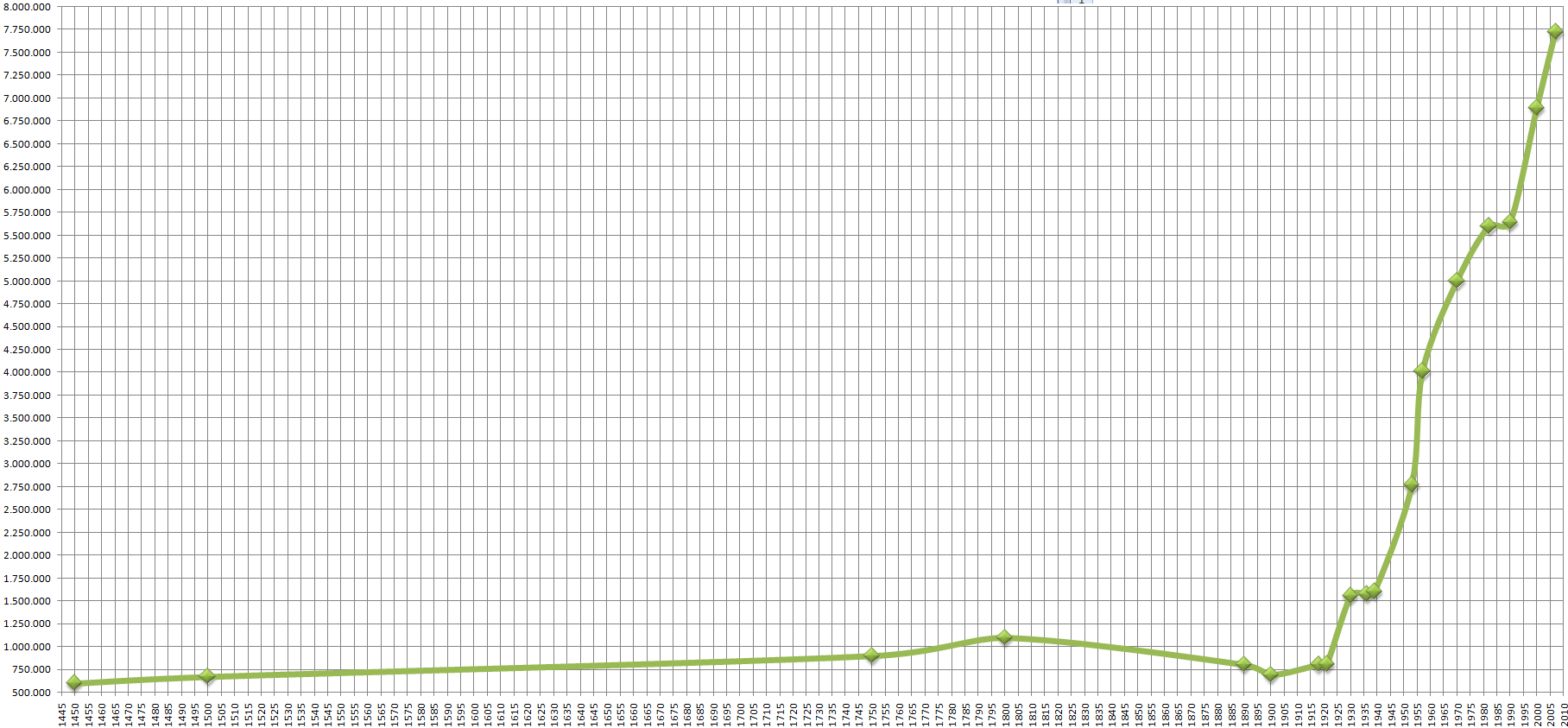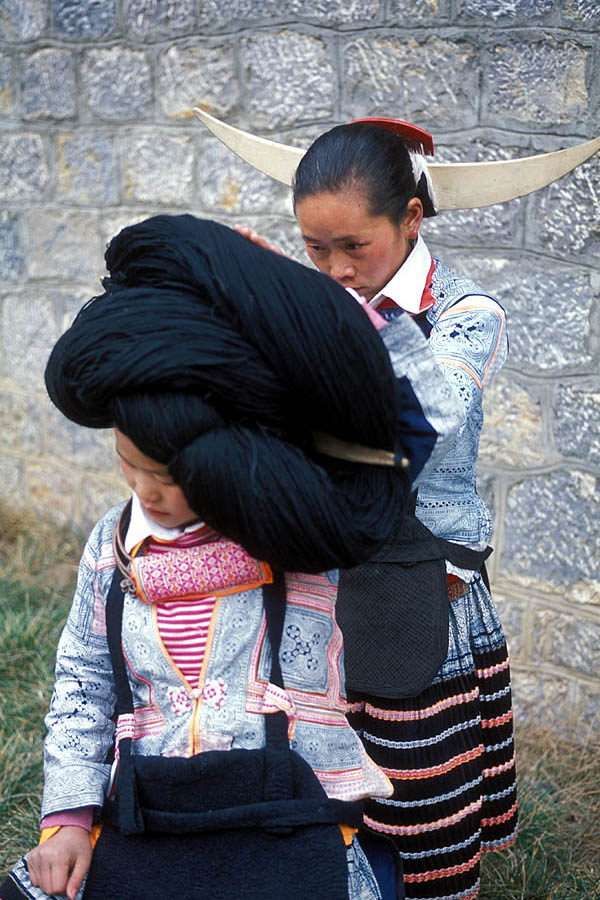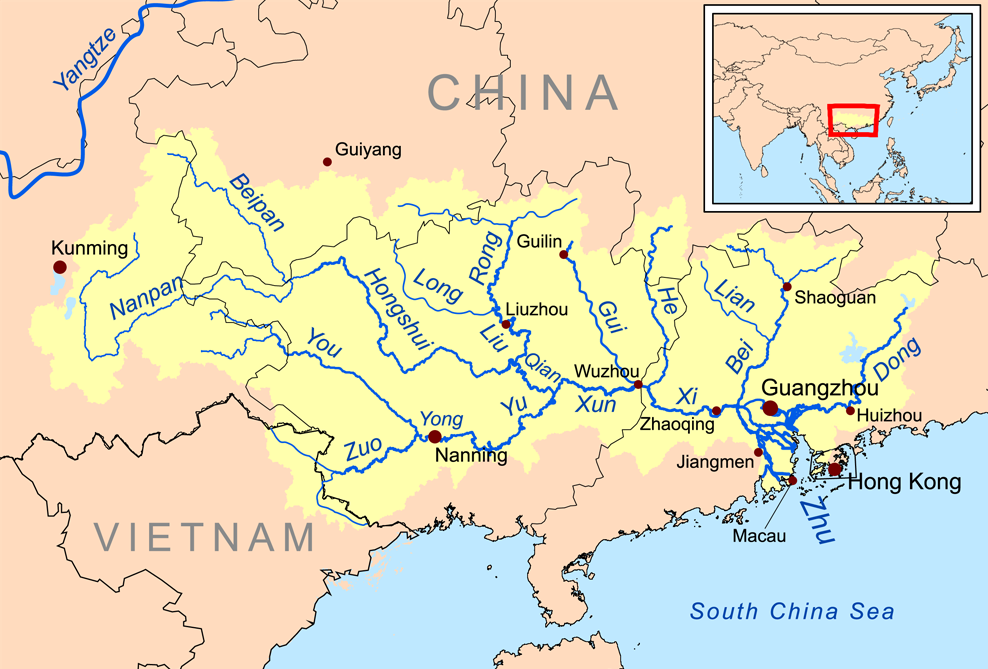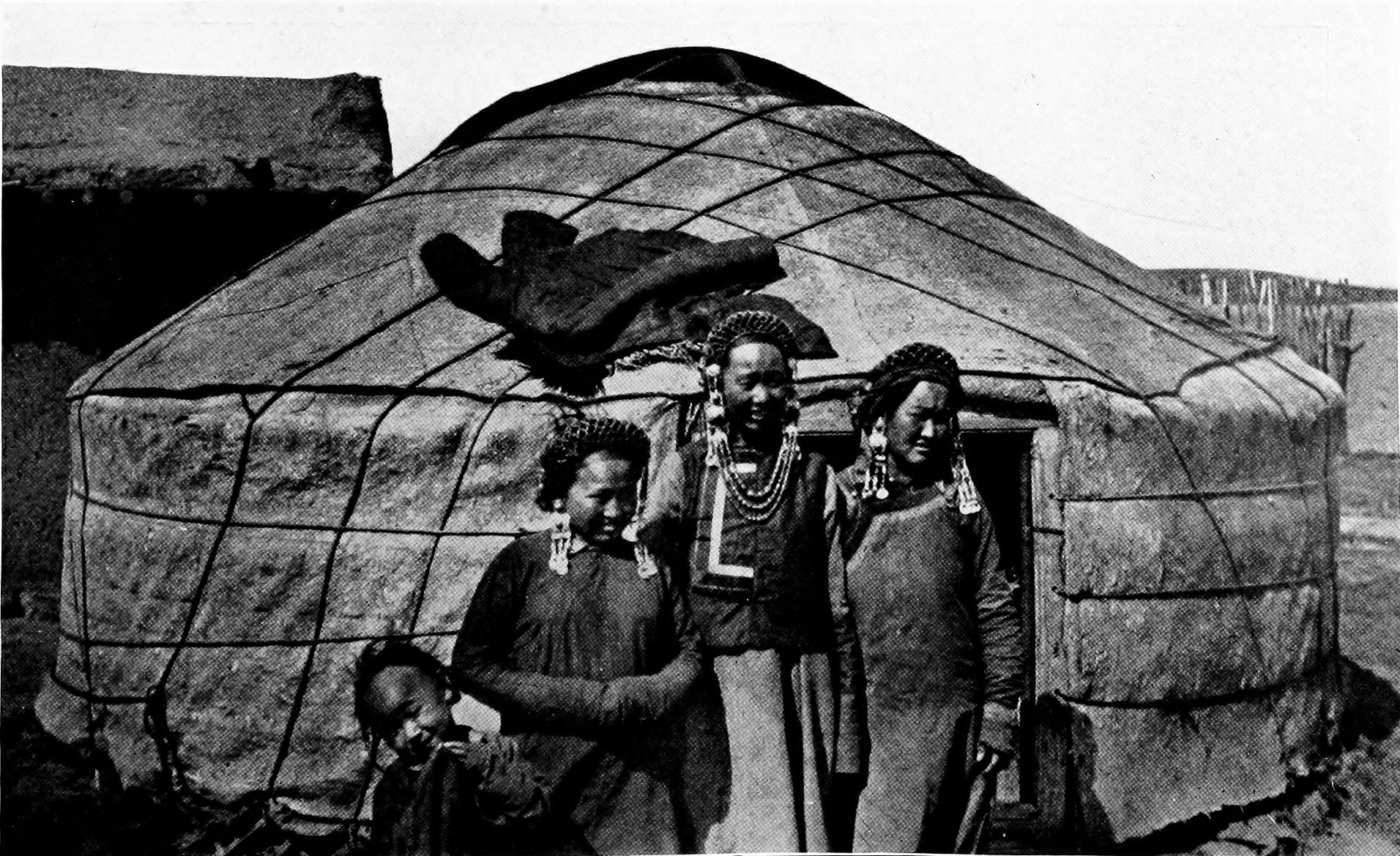|
Demographics Of Beijing
The registered population of Beijing Municipality consists of people holding either Beijing permanent residence '' hukou permits'' or temporary residence permits. The 2010 census revealed that the official total population in Beijing was 19,612,368, representing a 44% increase over the last decade. In 2006, the population of the urban core was 13.33 million, 84.3 percent of the total municipal population, which officially stood at 15.81 million.Figures based on 2006 statistics published in 2007 National Statistical Yearbook of China and available online a2006年中国乡村人口数 中国人口与发展研究中心 Retrieved 21 April 2009. Urban sprawl continues at a rapid pace. After Chongqing and Shanghai, Beijing is the third largest of the four directly controlled municipalities of the People's Republic of China. In the PRC, a directly controlled municipality (直辖市 in pinyin: zhíxiáshì) is a city with status equal to a province. Even though Chongqing is ... [...More Info...] [...Related Items...] OR: [Wikipedia] [Google] [Baidu] |
Tibet
Tibet (; ''Böd''; ), or Greater Tibet, is a region in the western part of East Asia, covering much of the Tibetan Plateau and spanning about . It is the homeland of the Tibetan people. Also resident on the plateau are other ethnic groups such as Mongols, Monpa people, Monpa, Tamang people, Tamang, Qiang people, Qiang, Sherpa people, Sherpa, Lhoba people, Lhoba, and since the 20th century Han Chinese and Hui people, Hui. Tibet is the highest region on Earth, with an average elevation of . Located in the Himalayas, the highest elevation in Tibet is Mount Everest, Earth's highest mountain, rising above sea level. The Tibetan Empire emerged in the 7th century. At its height in the 9th century, the Tibetan Empire extended far beyond the Tibetan Plateau, from the Tarim Basin and Pamirs in the west, to Yunnan and Bengal in the southeast. It then divided into a variety of territories. The bulk of western and central Tibet (Ü-Tsang) was often at least nominally unified under a ser ... [...More Info...] [...Related Items...] OR: [Wikipedia] [Google] [Baidu] |
Tibetan People
Tibetans () are an East Asian people, East Asian ethnic group Indigenous peoples, native to Tibet. Their current population is estimated to be around 7.7 million. In addition to the majority living in the Tibet Autonomous Region of China, significant numbers of Tibetans live in the provinces of China, Chinese provinces of Gansu, Qinghai, Sichuan, and Yunnan, as well as in Bhutan, Tibetan refugees in India, India, and Nepal. The Tibetic languages belong to the Tibeto-Burman languages, Tibeto-Burman language group. The traditional or mythological explanation of the Tibetan people's origin is that they are the descendants of the human Pha Trelgen Changchup Sempa and rock ogress Ma Drag Sinmo. It is thought that most of the Tibeto-Burman speakers in southwest China, including Tibetans, are direct descendants from the Qiang (historical people), ancient Qiang people. Most Tibetans practice Tibetan Buddhism, although a significant minority observe the Indigenous Bon religion. There ... [...More Info...] [...Related Items...] OR: [Wikipedia] [Google] [Baidu] |
Uyghur People
The Uyghurs,. alternatively spelled Uighurs, Uygurs or Uigurs, are a Turkic ethnic group originating from and culturally affiliated with the general region of Central Asia and East Asia. The Uyghurs are recognized as the titular nationality of the Xinjiang Uyghur Autonomous Region in Northwest China. They are one of China's 55 officially recognized ethnic minorities. The Uyghurs have traditionally inhabited a series of oases scattered across the Taklamakan Desert within the Tarim Basin. These oases have historically existed as independent states or were controlled by many civilizations including China, the Mongols, the Tibetans, and various Turkic polities. The Uyghurs gradually started to become Islamized in the 10th century, and most Uyghurs identified as Muslims by the 16th century. Islam has since played an important role in Uyghur culture and identity. An estimated 80% of Xinjiang's Uyghurs still live in the Tarim Basin. The rest of Xinjiang's Uyghurs mostly live i ... [...More Info...] [...Related Items...] OR: [Wikipedia] [Google] [Baidu] |
Miao People
Miao is a word that the Chinese use to designate some ethnic minority groups living in southern China and Mainland Southeast Asia. Miao is thus officially recognized by the Chinese government as one of the largest ethnic minority groups that has more than 56 official ethnicities and dialects. The Miao live primarily in the mountains of southern China. Their homeland encompasses the provinces of Guizhou, Yunnan, Sichuan, Hubei, Hunan, Guangxi, Guangdong, and Hainan. Some sub-groups of the Miao, most notably the Hmong people, have migrated out of China into Southeast Asia (Myanmar, Northern Vietnam, Laos, and Thailand). Following the communist takeover of Laos in 1975, a large group of Hmong refugees resettled in several Western nations, mainly in the United States, France, and Australia. Miao is a Chinese term, while the component groups of people have their own autonyms, such as (with some variant spellings) Hmong, Hmu, Xong (Qo-Xiong), and A-Hmao. These people (except th ... [...More Info...] [...Related Items...] OR: [Wikipedia] [Google] [Baidu] |
Zhuang People
The Zhuang (; ; , , Sawndip: 佈獞) are a Tai-speaking ethnic group who mostly live in the Guangxi Zhuang Autonomous Region in Southern China. Some also live in the Yunnan, Guangdong, Guizhou, and Hunan provinces. They form one of the 56 ethnic groups officially recognized by the People's Republic of China. With the Bouyei, Nùng, Tày, and other Northern Tai speakers, they are sometimes known as the Rau or Rao people. Their population, estimated at 18 million people, makes them the largest minority in China. Etymology The Chinese character used for the Zhuang people has changed several times. Their autonym, "Cuengh" in Standard Zhuang, was originally written with the graphic pejorative , (or ''tóng'', referring to a variety of wild dog).漢典.獞. Chinese. Accessed 14 August 2011. 新华字典, via 中华昌龙网. 字典频道.". Chinese. Accessed 14 August 2011. Chinese characters typically combine a semantic element or radical and a phonetic element. John De ... [...More Info...] [...Related Items...] OR: [Wikipedia] [Google] [Baidu] |
Tujia People
The Tujia (Tujia language, Northern Tujia: ''Bifjixkhar'' / ''Bifzixkar'', International Phonetic Alphabet, IPA: , Southern Tujia: ''Mongrzzir'', ; ) are an ethnic group and, with a total population of over 8 million, the eighth-largest Ethnic minorities in China, officially recognized List of ethnic groups in China, ethnic minority in the China, People's Republic of China. They live in the Wuling Mountains, straddling the common borders of Hunan, Hubei and Guizhou Provinces of China, Provinces and Chongqing Direct-controlled municipality, Municipality. The Exonym and endonym, endonym ''Bizika'' means "native dwellers". In Chinese, ''Tujia'' literally means "local families", in contrast to the Hakka people, Hakka (), whose name literally means "guest families" and implies migration. Origins Although there are different accounts of their origins, the Tujia may trace their history back over twelve centuries, and possibly beyond to the ancient Ba (state), Ba people who occupied th ... [...More Info...] [...Related Items...] OR: [Wikipedia] [Google] [Baidu] |
Koreans In China
Koreans in China include both ethnic Koreans with Chinese nationality and non-Chinese nationalities such as South Korean ( zh, s=在华韩国人·韩裔) and North Korean ( zh, s=在华朝鲜人·朝鲜裔) people living in China. For this reason, ethnic Koreans with Chinese nationality or citizenship are termed Korean Chinese, ''Joseonjok'', ''Chosŏnjok'' (), and their official name in China is ''Chaoxianzu'' ( zh, s=朝鲜族, p=Cháoxiǎnzú, l=Joseon ethnic group, labels=no). They form a diasporic community, maintaining ties to the Korean Peninsula across generations, including among individuals who have never visited Korea. Korean Chinese are the 13th largest ethnic minority group in China. Most of Korean Chinese live in Yanbian and Changbai within Jilin province. Significant populations can also be found in Heilongjiang, Liaoning, and Inner Mongolia Autonomous Region, with a sizable expat community in Shanghai. According to the South Korean government, the combin ... [...More Info...] [...Related Items...] OR: [Wikipedia] [Google] [Baidu] |
Mongols In China
Mongols in China, also known as Mongolian Chinese or Chinese Mongols, are ethnic Mongols who live in China. They are one of the List of ethnic groups in China#Ethnic groups recognized by the People's Republic of China, 56 ethnic groups recognized by the Chinese government. As of 2020, there are 6,290,204 Mongols in China, a 0.45% increase from the 2010 national census. Most of them live in Inner Mongolia, Northeast China, Xinjiang and Qinghai. The Mongol population in China is nearly twice as much as that of the sovereign state of Mongolia. Distribution The Mongols in China are divided between autonomous regions and provinces as follows: * 68.72%: Inner Mongolia Autonomous Region * 11.52%: Liaoning Province * 2.96%: Jilin Province * 2.92%: Hebei Province * 2.58%: Xinjiang Uyghur Autonomous Region * 2.43%: Heilongjiang Province * 1.48%: Qinghai Province * 1.41%: Henan Province * 5.98%: Rest of PRC Besides the Inner Mongolia autonomous region, there are other Mongol autonomo ... [...More Info...] [...Related Items...] OR: [Wikipedia] [Google] [Baidu] |
Nationalities Of China
The Han people are the largest ethnic group in mainland China. In 2010, 91.51% of the population were classified as Han (~1.2 billion). Besides the Han Chinese majority, 55 other ethnic (minority) groups are categorized in present-day China, numbering approximately 105 million people (8%), mostly concentrated in the bordering northwest, north, northeast, south and southwest but with some in central interior areas. The major ethnic minorities in China are the Zhuang (19.6 million), Hui (11.4 million), Uyghurs (11 million), Miao (11 million), Manchus (10.4 million), Yi (9.8 million), Tujia (9.6 million), Tibetans (7 million), Mongols (6.3 million), Buyei (3.5 million), Dong (3.5 million), Yao (3.3 million), Bai (2 million), Koreans (1.7 million), Hani (1.7 million), Li (1.6 million), Kazakhs (1.5 million), and Dai (1.2 million). At least 126,000 people from Canada, the United States and Europe are living in mainland China. In addition, there are a number of unrecog ... [...More Info...] [...Related Items...] OR: [Wikipedia] [Google] [Baidu] |
People's Liberation Army
The People's Liberation Army (PLA) is the military of the Chinese Communist Party (CCP) and the People's Republic of China (PRC). It consists of four Military branch, services—People's Liberation Army Ground Force, Ground Force, People's Liberation Army Navy, Navy, People's Liberation Army Air Force, Air Force, and People's Liberation Army Rocket Force, Rocket Force—and four arms—People's Liberation Army Aerospace Force, Aerospace Force, People's Liberation Army Cyberspace Force, Cyberspace Force, People's Liberation Army Information Support Force, Information Support Force, and People's Liberation Army Joint Logistics Support Force, Joint Logistics Support Force. It is led by the Central Military Commission (China), Central Military Commission (CMC) with its Chairman of the Central Military Commission (China), chairman as Supreme Military Command of the People's Republic of China, commander-in-chief. The PLA can trace its origins during the Republic of China (1912– ... [...More Info...] [...Related Items...] OR: [Wikipedia] [Google] [Baidu] |
Wangjing, Beijing
Wangjing subdistrict () is a subdistrict office in Chaoyang district, Beijing. It borders Donghu Subdistrict to the north, Laiguangying Area and Datun Subdistrict to the west, Jiangtai area and Jiuxianqiao Subdistrict to the east, and Taiyanggong area to the south. Wangjing is a self-contained and multifunctional urban area that was newly developed in the northeast of central Beijing. It is under the jurisdiction of the Chaoyang District of Beijing, and in 2020 it has a population of 146,220. In recent years, Wangjing is developing into a residential area with a diverse population, an area of new companies, and an area that gathers corporate headquarter. TOP500 companies, international businesses, as well as scientific research industries are building their offices in Wangjing. History Origin of the name Wangjing has been the name for the area for at least nearly a thousand years of history. There are many provenances of how Wangjing was named that can be found in c ... [...More Info...] [...Related Items...] OR: [Wikipedia] [Google] [Baidu] |









